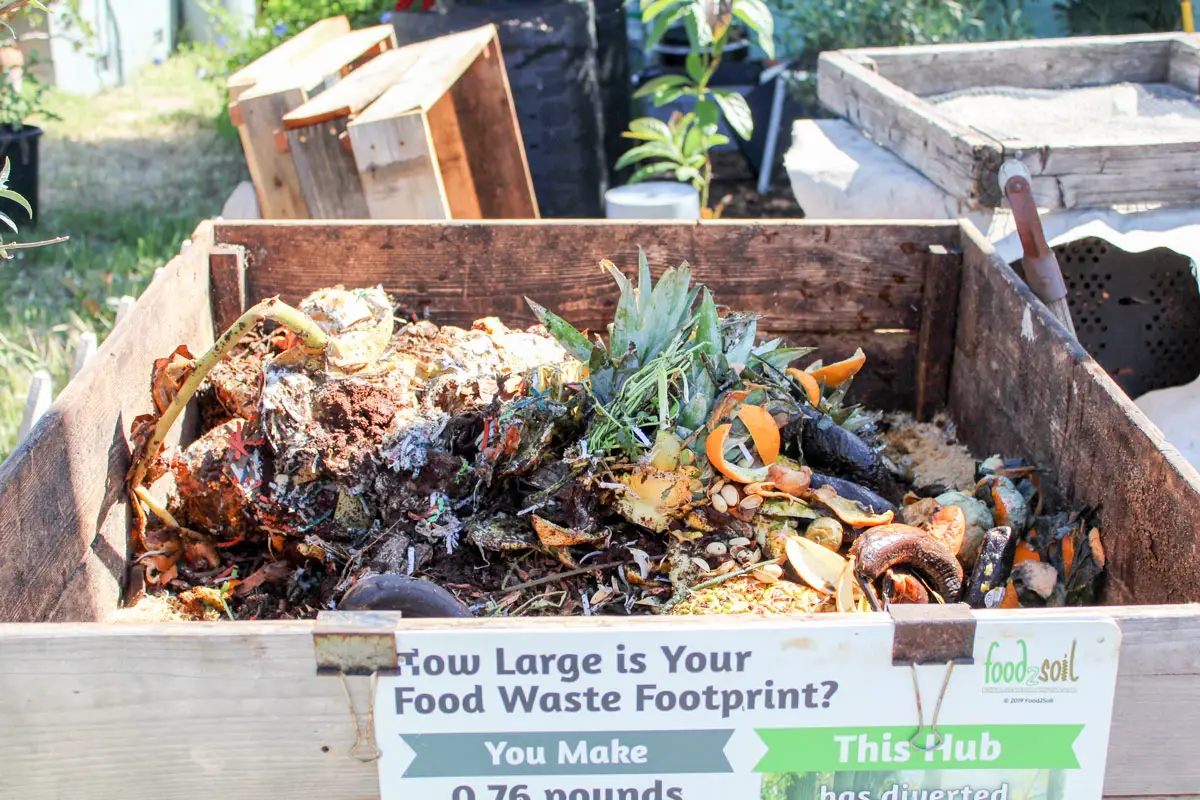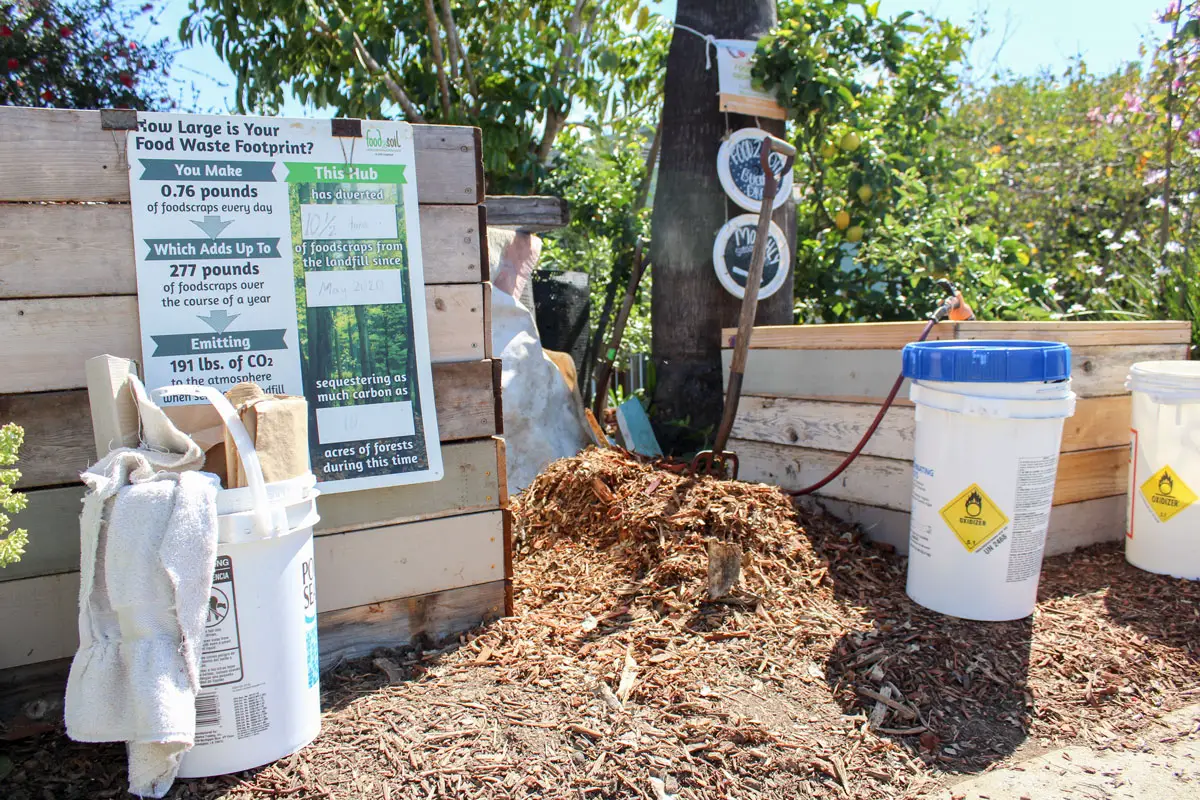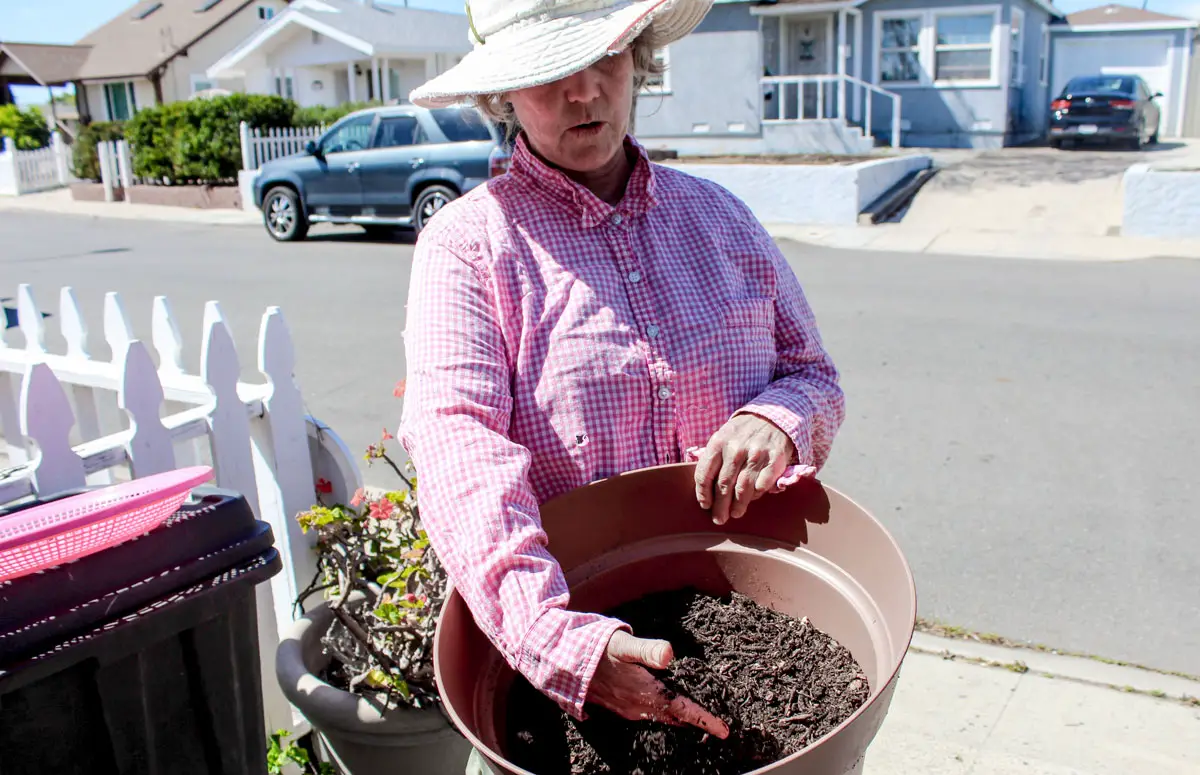REGION — These days, you might hear a common refrain from your neighbors: “We barely have trash anymore.”
As subscribers of San Diego’s Food2Soil Composting Collective dropped off their kitchen scraps at Wendy Miller’s home drop-off on Monday in the City Heights neighborhood of San Diego, each had similar observations — their trash cans are taking longer to fill.
Instead, residents are collecting food waste to be turned — once, twice, three times — in compost bins at their homes or third-party sites.
“I love doing it from my front yard,” Miller said. “I know I’ve got gardeners coming from all over.”
Subscribers can then choose to take finished compost for home gardens or landscape amendments at the drop-off location (In Encinitas, subscribers can take their compost to a residential drop-off site on Sweet Alice Lane). Food2Soil is one program of many working to help North County residents start recycling more organic waste.

While composting is a long-standing practice in many areas in North County, the practice is gaining more traction with the passage of new legislation.
Statewide, the goal is to relieve landfills of organic waste on a far larger scale. Senate Bill 1383, which took effect in January, aims to reduce organic waste disposal by 75% and rescue at least 20% of surplus food (otherwise disposed) by 2025.
The legislation requires cities to offer curbside pickup (i.e. green bins) and procurement vessels for businesses and municipalities to use the organic recyclables.
“In the San Diego region, our soils are very low in organic material, there’s not much there,” said Michael Wonsidler, program manager for the county’s Solid Waste Planning and Recycling and Creative Services sections. “It’s mostly sandy material that needs that introduction of organic material.”

At home, residents all over the county are stepping up to recycle this material and feed their gardens. Composting is the natural heating and cooling of waste as it decomposes. Whether in an outdoor bucket or pile, a mixture of yard clippings, food scraps and air decomposes into nutrient-rich material resembling dirt.
The process transforms inedible food scraps and green waste that typically goes to the landfill to produce a natural soil amendment while preventing the production of methane.
Carol Graham has a hard time pinpointing when she began composting, but it was sometime after she moved to Encinitas in the 1970s but prior to joining the Solana Center for Environmental Innovation roughly 20 years later.
“I notice that the compost I sift out of the finished product looks every bit as good — or better, I think — than the bagged stuff you get at the nursery,” Graham said, who is also a master composter and master gardener in San Diego County.
To Graham, a zoologist who grew up with a garden-enthusiastic mother, composting just makes sense. The practice is an affordable alternative to store-bought soil amendments and is beneficial to the environment.

Currently, residents in places like Encinitas and Escondido already have access to haulers with organic and food waste collection sites. Other cities are still catching up. Just this past week, the city of Oceanside and Waste Management just approved a contract for curbside organic recycling services by 2024.
For residents in unincorporated areas, such as Fallbrook, Lakeside and Spring Valley, the County of San Diego ensures they have access to organic waste disposal.
“Sometimes food will go bad,” said Jessica Toth, executive director at the Solana Center, which works with a majority of the cities in San Diego County to keep the diversion ball rolling. “But there’s a lot we can do to prevent what we’re wasting — it should be returned to [the Earth].”
Toth said that the region generates 1.6 million tons of organic waste, 500,000 tons of that from food.
Across the state, organic waste produces 20 percent of the state’s methane. (Methane is 84 times more potent than carbon dioxide in the first two decades after its release. Both methane and carbon dioxide are considered significant greenhouse gasses.)
Compost has the unique ability to put nutrients back in the ground after it’s been ripped into for farming and development. It also holds four times its weight in water, which strengthens soil during droughts, provides erosion control and stabilizes the ground after a fire.
The county government is currently looking at ways to reach its procurement goals and help other cities do the same. While compost is not the only method to recycle waste, it is one-way residents can directly get involved.
Jacqueline Covey is also a volunteer for the Solana Center for Environmental Innovation.


